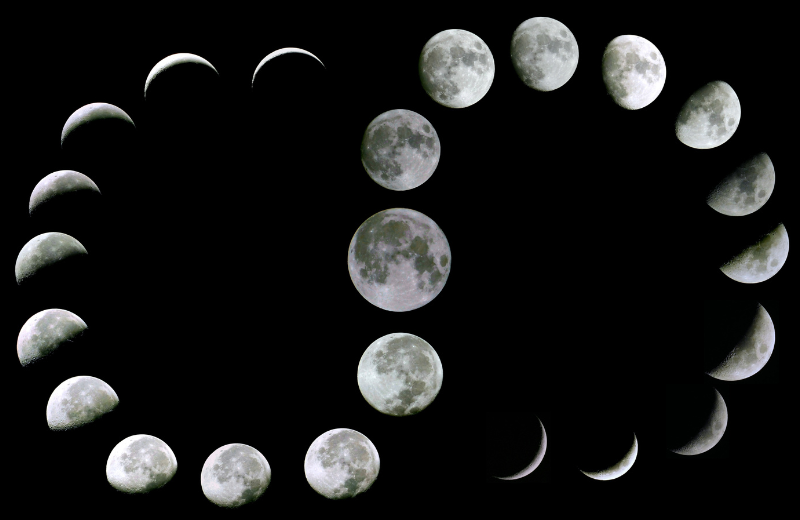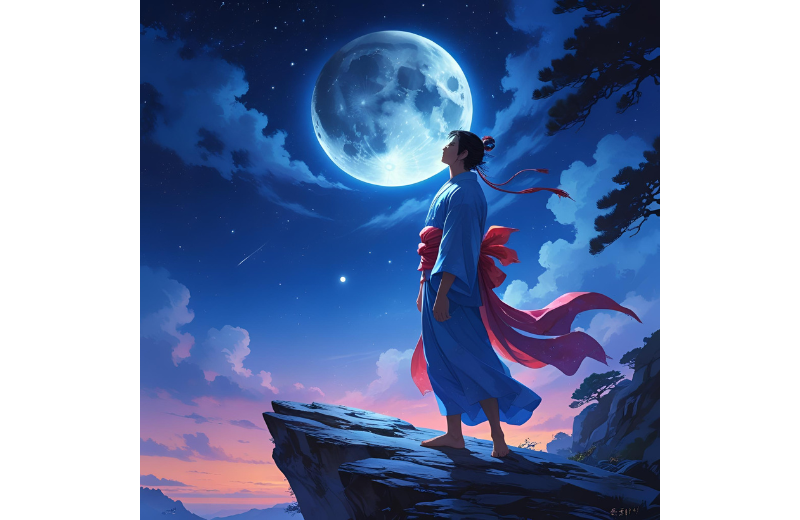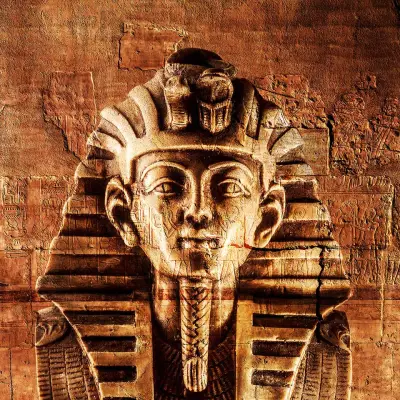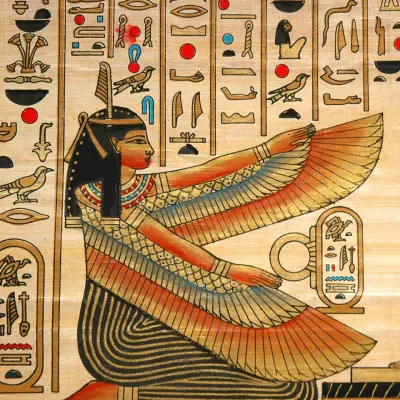Tsukuyomi-no-Mikoto is a fascinating moon god in Japanese Mythology. You might be exploring Tsukuyomi’s story for personal interest, spiritual insight, or cultural knowledge. Whatever your reason, this guide will help you understand the myths, symbols, and significance of this enigmatic deity.
Jump to:
- Who Is Tsukuyomi in Japanese Mythology?
- Tsukuyomi’s Myths
- The Role of Tsukuyomi in Japanese Storytelling
- What Powers Did Tsukuyomi Possess?
- Symbols Associated with Tsukuyomi
- Tsukuyomi’s Lineage and Connections
- Why Is Tsukuyomi Special?
- Tsukuyomi in Modern Culture
- Tsukuyomi’s Worship and Legacy
- Frequently Asked Questions About Tsukuyomi
- Study Japanese Mythology for £29
Recommended for you!
Best SellersWho Is Tsukuyomi in Japanese Mythology?
Tsukuyomi, or Tsukuyomi-no-Mikoto, is a Japanese god, known as the Shinto moon god in Japanese mythology. He’s one of the principal deities born from the purification of the creator god Izanagi after his descent into the underworld. According to the ancient texts, Tsukuyomi was born from Izanagi’s right eye, while Amaterasu, the sun goddess, was born from his left.
The name Tsukuyomi is commonly written using the kanji 月読, which can be interpreted as “moon reader” or “moon phase reader”. The tsukuyomi meaning reflects a deep connection to the rhythms of time, cycles of nature, and the mysterious beauty of the moon.
Tsukuyomi’s Myths

While Tsukuyomi is not as frequently mentioned as some of his divine siblings, there are several notable myths that offer insight into his character and role in the celestial order. These stories help explain his symbolism, his relationships with other deities, and the origins of cosmic phenomena.
The Banquet of Ukemochi
One of the most well-known myths tells of a banquet hosted by Ukemochi, the goddess of food. Tsukuyomi was sent as Amaterasu’s representative, but when he saw Ukemochi producing food by spitting and exhaling it from her body, he was repulsed. Viewing the act as impure and offensive, he killed her on the spot. When Amaterasu learned of this, she was horrified and permanently distanced herself from Tsukuyomi, which is why the sun and moon are never seen together in the sky.
The Birth of the Three Noble Children
Tsukuyomi’s origin is part of a larger myth involving the purification of the creator god Izanagi. After returning from the underworld, Izanagi washed himself to cleanse the impurities of death. From this act, three important deities were born: Amaterasu from his left eye, Tsukuyomi from his right eye, and Susanoo from his nose. This myth highlights Tsukuyomi’s divine status and his intrinsic link to both celestial balance and his powerful siblings.
The Separation of Day and Night
Another myth explores the symbolic consequences of Tsukuyomi’s actions and personality. Following the murder of Ukemochi, Amaterasu declared that she would no longer share the same space with her brother. This myth is used to explain why the sun and moon travel separately across the sky, representing both a physical separation and a metaphysical rift between light and darkness, warmth and coldness, compassion and judgment. It reflects how divine actions can shape natural laws and cosmic rhythms.
The Role of Tsukuyomi in Japanese Storytelling
Tsukuyomi plays a quieter role in mythology compared to deities like Amaterasu or Susanoo. He doesn’t appear frequently in the myths, and when he does, it’s often to highlight contrast rather than dominance.
This absence gives him a mysterious, almost elusive quality. His myth represents themes of isolation, judgement, and consequence. His separation from Amaterasu introduces a cosmic duality: day and night, light and shadow, warmth and cold.
Despite the limited narratives, Tsukuyomi remains a meaningful figure in the pantheon, prompting deeper reflection on the balance of opposites and the power of choice.
What Powers Did Tsukuyomi Possess?

Tsukuyomi’s powers are subtle, reflective, and deeply symbolic, fitting his role as the moon god in Japanese mythology:
- Control Over Time and the Lunar Cycle: As the moon god Japanese tradition reveres, Tsukuyomi oversees the phases of the moon and the passage of time. This includes influencing the tides, lunar calendars, and the natural cycles that affect life on Earth. His power brings balance and structure to the world, offering a sense of order even in darkness.
- Judgement and Moral Authority: Tsukuyomi is known for his strong sense of purity and right conduct, as shown in the myth where he killed Ukemochi for what he perceived as impure behaviour. His actions, though controversial, mark him as a deity of strict principles. This power of judgement can be seen as both a strength and a flaw, giving him influence over decisions and ethical codes.
- Spiritual Observation: As a deity of the night, Tsukuyomi represents awareness of what is hidden or overlooked. His association with the moon lends him a symbolic connection to introspection, dreams, and the subconscious. He is the watchful presence in the shadows, perceiving truths that others might miss.
- Separation and Cosmic Balance: Through his mythological separation from Amaterasu, Tsukuyomi plays a role in establishing the balance between day and night. His divine nature allows him to maintain distance and stillness, creating a necessary contrast within the Shinto cosmology.
- Calm Yet Unyielding Influence: Unlike storm gods or war deities, Tsukuyomi’s strength lies in his serenity and detachment. His power comes from his consistency and unwavering presence, qualities that hold great spiritual and symbolic weight in Japanese mythology.
Symbols Associated with Tsukuyomi

Symbols connected with Tsukuyomi reflect his lunar essence, his association with silence and observation, and his place in the celestial hierarchy:
- The Moon and Its Phases: Naturally, the most direct symbol of Tsukuyomi is the moon, particularly its waxing and waning phases. These represent the passage of time, transformation, and the invisible forces that shape life.
- Silver, White, and Pale Blue: These colours are often associated with Tsukuyomi’s cool and ethereal nature. Silver echoes the moon’s glow, white symbolises purity and detachment, and pale blue reflects calmness and night-time serenity.
- Owls and Nocturnal Animals: Animals active at night, especially owls, are symbolic of Tsukuyomi’s ability to see what others cannot. They represent wisdom, quiet power, and spiritual insight.
- Water and Tides: Though not a sea god, Tsukuyomi’s connection to the moon ties him to the movement of water, particularly the ocean’s tides. This symbol links him to emotional flow, intuition, and natural rhythms.
- The Kanji 月読 (Tsukuyomi): The writing of his name is symbolic in itself. “Moon” (月) and “to read/count” (読) suggest a deity who understands time, cycles, and the deeper meaning behind celestial movements.
- Mirrors and Reflection: While more commonly associated with Amaterasu, mirrors can also symbolise Tsukuyomi’s reflective qualities, both literal moonlight and inner self-examination.
- Stillness and Distance: Unlike more active deities, Tsukuyomi’s symbols often embody quiet, removed power. Shrines dedicated to him may emphasise stillness, silence, and a sense of sacred separation from the bustle of daily life.
Tsukuyomi’s Lineage and Connections
Tsukuyomi-no-Mikoto is one of the three noble children born from the purification of Izanagi, the Shinto creator god who, alongside his sister-wife Izanami, shaped the land of Japan and brought forth its many deities. Tsukuyomi’s divine birth occurred when Izanagi cleansed his right eye, following his return from the underworld, a ritual that also gave rise to Amaterasu from his left eye and Susanoo from his nose.
As such, Tsukuyomi is the brother of Amaterasu, the radiant sun goddess, and Susanoo, the tempestuous god of storms and seas. These three siblings represent the celestial triad in Shinto mythology, sun, moon, and sea, and their relationships frame many of the fundamental stories in Japan’s spiritual tradition.
Tsukuyomi differs from his siblings in one significant way: there are no known myths describing romantic relationships or marriage involving him. This enhances his portrayal as a solitary and distant figure, reflecting the cool detachment of the moon. Unlike Susanoo, who takes a mortal wife and becomes a forefather to noble descendants, Tsukuyomi’s legacy lies more in cosmic symbolism and celestial order than in earthly ties or dynasties.
Why Is Tsukuyomi Special?

Tsukuyomi stands out because of his stillness and his moral conviction. While he doesn’t wage wars or rule kingdoms, he holds immense symbolic power. His myth touches on ethical judgment, loneliness, and the divide between purity and compassion.
Tsukuyomi is special because of his complexity. He isn’t simply a hero or a villain. His story forces us to think about right and wrong, isolation versus connection, and how one choice can change everything.
Tsukuyomi in Modern Culture
Though Tsukuyomi plays a quieter role in traditional worship, he has left a subtle yet significant mark on modern culture. His image appears in anime, manga, and games, often reinterpreted through a lens of mystery and moon symbolism.
In Naruto, the name “Tsukuyomi” is used for a powerful illusion technique that manipulates perception and time, drawing loosely from the moon god’s associations with introspection and control. Games like Final Fantasy XIV present Tsukuyomi as a boss figure tied to lunar energy, sometimes reimagining the deity as female to suit storytelling needs. These creative adaptations highlight themes from his mythology: solitude, balance, and hidden strength.
Beyond entertainment, Tsukuyomi is also embraced in spiritual settings, where moon rituals and symbolic altars feature silver objects, owls, or water to reflect his serene influence. He continues to inspire those drawn to reflection, quiet observation, and the steady rhythm of nature, showing that even the most understated deities can have a lasting cultural impact.
Tsukuyomi’s Worship and Legacy
Tsukuyomi is not widely worshipped in large-scale Shinto rituals today, and few shrines are solely dedicated to him. However, he’s still honoured in some locations, such as Miyazu Shrine in Kyoto Prefecture, where he appears alongside other celestial kami. His legacy is also embedded in the symbolic division of night and day, offering spiritual meaning to moon phases, seasonal rhythms, and quiet observation.
For modern practitioners, connecting with Tsukuyomi may involve moonlight meditation, journalling by lunar cycles, or creating altars with silver, white, or water-themed offerings. His myth serves as a reminder of the power in stillness and the importance of making principled choices, even when they lead to solitude. Through symbolism and reflection, Tsukuyomi’s influence continues to guide those who value calm, clarity, and inner balance.
Recommended for you!
Best SellersFrequently Asked Questions About Tsukuyomi
Is Tsukuyomi male or female?
Most traditions describe Tsukuyomi as a male deity, though some texts leave his gender undefined.
What is the difference between Amaterasu and Tsukuyomi?
Amaterasu is the sun goddess, associated with light, life, and compassion. Tsukuyomi, her brother, is the moon god, linked with night, order, and detachment.
What is Tsukuyomi's weakness?
Tsukuyomi’s weakness isn’t physical but emotional—his strict moral code leads to isolation and estrangement.
What kind of god is Tsukuyomi?
Tsukuyomi is a calm and judegmental moon god, who values purity and order, often at the cost of connection and warmth.
What is the kanji for Tsukuyomi?
The kanji for Tsukuyomi is 月読. It combines the characters for “moon” (月) and “to read” or “to count” (読), often interpreted as “moon reader” or “reader of the moon phases.”
Is Tsukuyomi a Shinto god?
Yes, Tsukuyomi is one of the prominent deities in the Shinto religion. He is considered one of the three noble children of the creator god Izanagi and plays a symbolic role in the Shinto cosmology.
Study Japanese Mythology for £29
Interested in exploring more about ancient Japanese beliefs, traditions, and divine figures like Tsukuyomi? The Introduction to Japanese History and Culture Diploma Course from Centre of Excellence is the perfect place to start. For a discounted price of £29, you'll learn about he spiritual stories, practices, and philosophies that shaped Japan’s past and continue to influence it today.












